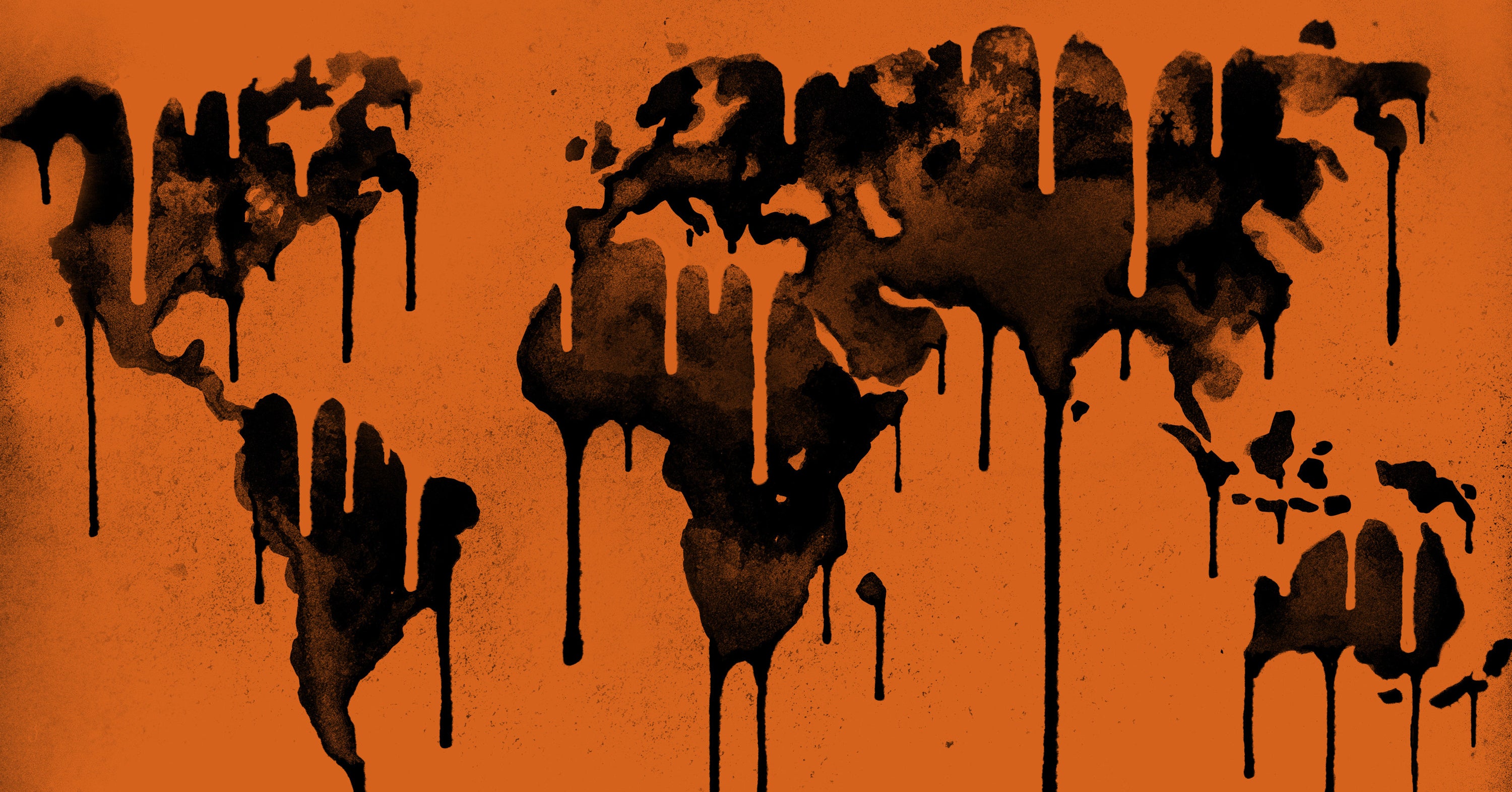Rob Dobi for BuzzFeed Information
There’s a really actual probability the planet will heat up a mean of three levels Celsius (5.4 levels Fahrenheit) this century — and that will be disastrous.
In such a brutally scorching world, scientists agree, lethal warmth waves, huge wildfires, and damaging downpours will come much more usually and hit a lot tougher than they do at this time. The ocean will probably be hotter too and extra acidic, causing fish declines and sure the tip of coral reefs. Actually, 1 / 4 or so of the Earth’s species may go extinct in such situations or be headed that approach. Our coastlines can be reshaped, a consequence of sea ranges rising foot after foot, century after century, drowning places like Charleston, South Carolina’s Market Avenue, downtown Windfall, Rhode Island, and the House Heart in Houston.
All of this, as local weather scientist Daniel Swain of the College of California, Los Angeles, put it, can be unhealthy: “Dangerous for people. Dangerous for ecosystems. Dangerous for the soundness of the Earth techniques that we people rely on for the whole lot.”
Specialists can’t say precisely how probably this future is as a result of that will depend on what humankind does to mitigate the worsening local weather disaster, particularly over the approaching decade. However for world leaders gathering this weekend in Glasgow for the twenty sixth United Nations Local weather Change Convention (COP26), this future could effectively grow to be an inevitability in the event that they don’t comply with extra aggressive and quick measures to restrict greenhouse fuel emissions.
“Dangerous for people. Dangerous for ecosystems. Dangerous for the soundness of the Earth techniques that we people rely on for the whole lot.”
The collective international objective below the Paris local weather settlement is to stop rising international temperatures from growing not more than 2 levels Celsius (3.6 Fahrenheit), with not more than 1.5 levels (2.7 Fahrenheit) as preferrred. However at the moment, we’re on track for almost double that — a probably catastrophic 3 levels.
“I concern that with out science-based coverage, and that almost all formidable goal being achieved, we will probably be dealing with a 3-degree-Celsius world by later this century,” Kim Cobb, a local weather scientist at Georgia Tech and one of many authors on the most recent Intergovernmental Panel on Local weather Change (IPCC) report, advised BuzzFeed Information. “It’s nearly unimaginable, frankly.”
So, what may 3 levels Celsius of warming appear like?
For one, our world will probably be a lot hotter than at this time.
George Rose / Getty Pictures
The water stage at Lake Tahoe has fallen under its pure rim, dropping greater than 3 toes and shutting off the circulation of water down the Truckee River as seen on Oct. 17 in South Lake Tahoe, California.
The place to begin for measuring future warming isn’t at this time — it’s the late 1800s, when dependable international temperature data began turning into out there. Greater than a century later, the planet has already warmed a little bit greater than 1 diploma Celsius (1.8 levels Fahrenheit) as a result of accumulation of fossil gasoline pollution similar to carbon dioxide and methane within the ambiance. That’s a mean, however some places have already gotten much warmer.
Including 2 extra levels to the greater than 1 diploma we’ve already added would make our world a lot hotter and disproportionately hotter on land. Right here’s why: About 70% of the planet is roofed in water, and water warms extra slowly than land.
“If the entire world is warmed by 3 levels Celsius,” Swain defined, “all the land space has to heat by much more than that.”
“It’s nearly unimaginable, frankly.”
That might probably be about 1.5 levels Celsius hotter on common over land, or collectively 4.5 levels, in line with Zeke Hausfather, a local weather scientist and vitality techniques analyst on the Breakthrough Institute. And it’ll probably be even hotter within the Arctic, which is already warming roughly three times the speed of the remainder of the planet.
One option to envision what this may appear like within the locations by which we dwell is to think about the projected variety of days the place the native temperature hits or exceeds 95 levels Fahrenheit (35 levels Celsius). Earlier this century, Arizona skilled roughly 116 days of such excessive temperatures, Texas skilled about 43 days, Georgia about 11 days, Montana roughly 6 days, and Massachusetts simply 1 day, in line with modeling by the Climate Impact Lab.
Had been international temperatures to rise by a mean of three levels Celsius by 2100, these numbers would spike to an estimated vary of 179 to 229 days of no less than 95 levels Fahrenheit days in Arizona, 135 to 186 days in Texas, 85 to 143 days in Georgia, 46 to 78 days in Montana, and 26 to 66 days in Massachusetts, per the identical evaluation.
Disasters will multiply.
Michael Hanson / AFP by way of Getty Pictures
An indication offers instructions to a cooling middle at Kellogg Center College in Portland, Oregon, on Aug. 14.
Simply this summer season, the Northwest Pacific warmth wave introduced Dying Valley–like temperatures to British Columbia, Oregon, and Washington, killing hundreds of people in an occasion that scientists agree would have been “virtually impossible” with out local weather change. Then a record-setting downpour dropped about 9 inches in the midst of Tennessee, killing about two dozen folks. And final weekend, more than 5 inches dropped in a day in California’s capital metropolis of Sacramento, setting a brand new file.
“What I take into consideration is, what would the surprising occasion be in a 3-degree-warmer world?” Swain mentioned.
It’s unimaginable to know the reply precisely. However the basic contours of what it may appear like are already clear: much more widespread and intense excessive warmth occasions and equally extra frequent and intense downpours, even in locations which are anticipated to get drier in such a world. That is true for nearly anyplace on the planet.
“There are only a few locations on Earth that aren’t going to see a rise within the most precipitation depth,” Swain mentioned, including that there are “very probably zero locations that aren’t going to expertise a rise in essentially the most excessive scorching days.”
Pete Bannan / MediaNews Group by way of Getty Pictures
Warren Montgomery makes an attempt to make his approach throughout a street in Chadds Ford, Pennsylvania, following historic flooding from the storm system that was Hurricane Ida.
Statistics from the latest IPCC report assist this. What was thought-about a 1-in-10-year excessive warmth occasion, similar to a warmth wave, within the late Eighteen Eighties can be greater than 5.6 instances more likely to happen in a 3-degrees-warmer world. The result might be increased energy prices because of an explosion of air-conditioning, which may set off energy provide issues. These with out entry to cooling may endure extra warmth illness. After which there’s the problem of water shortages; along with ongoing warmth waves, they may spur huge crop failures.
Likewise, what was beforehand thought-about a 1-in-10-year excessive precipitation occasion over land can be greater than 1.7 instances more likely to happen. Some of these disasters have traditionally precipitated washed-out roads, flooded houses and companies, and knocked-out energy strains.
In the meantime, regional disasters may even enhance in frequency and depth. Assume extra extended droughts and larger wildfires alongside the West Coast and extra highly effective hurricanes alongside the Gulf Coast and East Coast. Worse, a phenomenon referred to as “compounding disasters” may imply such occasions hit in speedy succession or concurrently. A current instance of this was Louisiana’s Lake Charles, which suffered via a number of federally declared disasters in a 12 months: back-to-back hurricanes, together with a devastating Class 4 storm, adopted by a winter storm after which intense flooding.
Nickolay Lamm / Courtesy Local weather Central
A rendering of the Nationwide Mall with 3 levels of worldwide warming
In a 3-degrees-warmer world, the coastlines of at this time will largely be gone, endlessly diminished over the approaching centuries by rising seas.
By the tip of 2100, sea ranges are anticipated to rise by about 2 toes on common. That might be close to catastrophic for small island nations. Most of Maldives, giant swaths of the Bermuda archipelago, and a few of Seychelles island, together with its airport, might be underwater. So, too, may giant elements of Thailand’s capital of Bangkok, dwelling to greater than 5 million folks; the Netherland’s Amsterdam, the Hague, and Rotterdam cities, that are, mixed, dwelling to about 2 million folks; and far of the US Gulf Coast, together with sections of massive cities like New Orleans and Texas’s Galveston. These examples are primarily based on mapping by the analysis group Local weather Central, whose projections don’t account for present or future defenses constructed to counter rising water ranges.
“An estimated 12% of the present international inhabitants residing on land might be threatened.”
Water will proceed rising subsequent century and the one after. So leaping to 2,000 years sooner or later, Robert Kopp, a local weather scientist at Rutgers College, expects water ranges to be someplace between 13 toes to greater than 30 toes above present ranges. That a lot water, assuming there aren’t any defenses in place towards the rising ranges, would probably inundate elements of California’s Bay Space and Los Angeles and reconfigure a lot of the Texas, Louisiana, Mississippi, Alabama, and Florida coasts, in line with Local weather Central mapping.
“An estimated 12% of the present international inhabitants residing on land might be threatened below long-term future sea stage rise below the three levels Celsius situation,” mentioned Scott Kulp, a principal computational scientist at Local weather Central. “In order that quantities to 810 million folks.”
The projection to 2100 doesn’t account for the opportunity of the world’s ice sheets quickly melting, and even the longer-term estimates don’t assume a complete speedy collapse, though it’s potential. “The extra we push the system above 2 levels Celsius — however we don’t understand how a lot — the extra the possibility we set off ice sheet processes that would quickly enhance sea stage rise,” Kopp defined in an e mail.
The terrifying unknown.
David Mcnew / Getty Pictures
A chaparral brush panorama is charred by the Alisal hearth on Oct. 13 close to Goleta, California.
Maybe essentially the most scary factor a few 3-degrees-warmer world is an uncertainty about how it will influence the way in which our pure so-called carbon sinks — suppose vegetation and bushes, soil, and even the ocean — commonly and constantly pull carbon dioxide out of the air. If any one among these sinks have been to cease absorbing as a lot carbon, extra carbon would linger within the ambiance, fueling international warming.
“We actually can’t rule out a 4-degree-warmer world.”
Or there’s a risk that one of many extra longer-term carbon sinks may merely vanish. Proper now, for instance, there’s a layer of frozen floor, referred to as permafrost, unfold throughout elements of the planet, together with the poles. Collectively, all this permafrost stores more carbon than is at the moment within the ambiance. Because the planet warms, the permafrost layer will thaw, releasing a few of that carbon into the ambiance alongside the way in which and fueling extra warming in a harmful suggestions loop.
“Half of our emissions proper now are pulled again into the bottom by pure carbon sinks which were functioning decade in, decade out on the similar service ranges,” mentioned Cobb of Georgia Tech. “So going ahead, as a local weather scientist, it is rather regarding that we’re starting to know that there’s an actual danger that these pure carbon sinks may cease functioning as effectively at increased warming ranges.”
Because the Breakthrough Institute’s Hausfather put it: “The factor is, even when we expect we’re on monitor for a 3-degree-warmer world below present insurance policies, we actually can’t rule out a 4-degree-warmer world.” ●





